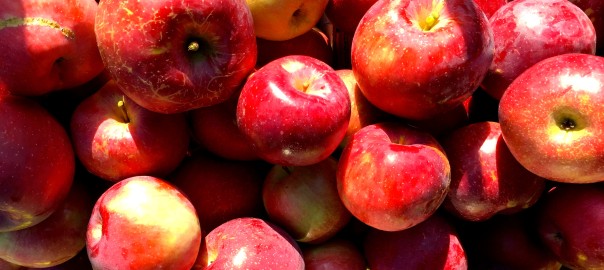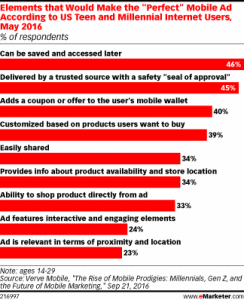This week, the articles that caught our eye were about innovation in targeting and storytelling.
ONLINE VIDEO: IT’S NOT JUST MILLENNIALS
Once predominantly the province of Millennials, online video watching has now stretched to include Gen X as well:
“The average consumer between the ages of 16 and 45 watches 204 minutes of video a day, split equally between TV and online. Forty-five minutes of the average online viewing time is done on a smartphone, while desktop accounts for 37 minutes and tablet for 20 minutes.”
#video
FEWER ADS MEANS BETTER ENGAGEMENT
This article in Digiday argues that the Atlantic’s recent redesign has upped ad performance by lessening the amount of content (including ads) on the homepage. It’s certainly worth paying more to be the only ad on a relevant page. If that’s the future of the ad-supported Web, we’re all for it.
#adtech #engagement
MARKETING WITH SHAZAM
ClickZ reports on the use of Shazam in print and TV ads for such retailers as Target.
“For about a decade now, marketers have been racking their brains trying to figure out the best way to link traditional ads with the Web. URLs came first, then hashtags and a call to action to visit Twitter. And while these tactics have certainly managed to boost engagement and interaction online, they don’t necessarily deliver the rich digital experience brands hope to provide.”
The article briefly mentions HarperCollins as well, which uses Shazam to link to Web content in their books (and, we’d add, has experimented with using it in ads as well). The jury’s out on whether the Shazam experiments will help enrich user experience or simply prove more popular with marketers than consumers. However it plays out, the ways physical products are linking up with information on the Web continues to be one of the most exciting frontiers of marketing innovation. We are pleased to see HarperCollins’s Shazam program gain wider recognition with the nomination in the “Marketing Campaign” category for the UK’s FutureBook Awards.
#shazam #adtech #futurebook
COSMO WINS 3MM VIEWS A DAY ON SNAPCHAT
Cosmo is showing how it’s done on the Snapchat “Discover” feature, growing their audience from 1.8 MM a day to over 3MM.
“Kate Lewis [VP and editorial director of digital at Cosmo] also said that people share Cosmo content in large numbers, which is an activity that is not typically associated with Snapchat, because sharing and retweeting are not common there. That may be changing, though. Cosmo’s Discover stories are shared up to 1.2 million times daily, Lewis said.”
#cosmo #snapchat #social
NEW GE CMO ON STORYTELLING
Buried in this article on storytelling and marketing is a GE program with Wattpad to sponsor new Sci Fi writing by the Wattpad community based on old GE materials. We know that fan fiction is often a consequence of a popular series such as Twilight and Harry Potter, but could sponsored fan fiction work as a marketing tool?
#storytelling #social #fanfiction #wattpad
INSTAGRAM AND EMAIL—TWO GREAT MARKETING TOOLS THAT WORK GREAT TOGETHER
This HubSpot article advocates bringing “inspirational” Instagram posts into the email marketing experience. Interesting stats from this article:
- In 2015 more than 200 billion emails will be sent every day. 57% of those will come from brands (what’s the point when consumers just abandon email altogether because it’s too spammy?)
- Instagram delivers 58% more engagement per post than Facebook and 120% more per post than Twitter
- 4 fo 5 Instagram users give brands permission to share their images
#social #email #instagram
ARE EMAIL ADDRESSES THE NEW COOKIE?
Emails have remained a secret weapon for marketing departments for years. As this ClickZ article puts it,
“While only 20 percent of the people (and email marketing’s audience is overwhelmingly people, not bots) open the email you send them, that 20 percent does so happily. They click and convert enough to make your tiny and underfunded email marketing department punch way above its weight.”
But now Google’s Custom Match, Facebook’s Custom Audiences, and Twitter’s Tailored Audiences allows you to upload email addresses to their systems and use them to target ads specifically to opt-in audiences you know will be interested in your book. This kind of targeting is also available through programmatic campaigns with such partners as AdRoll and Turn.
#email #programmatic



